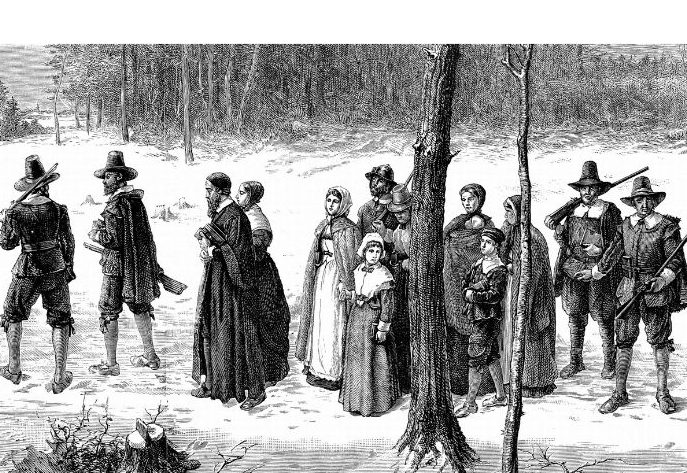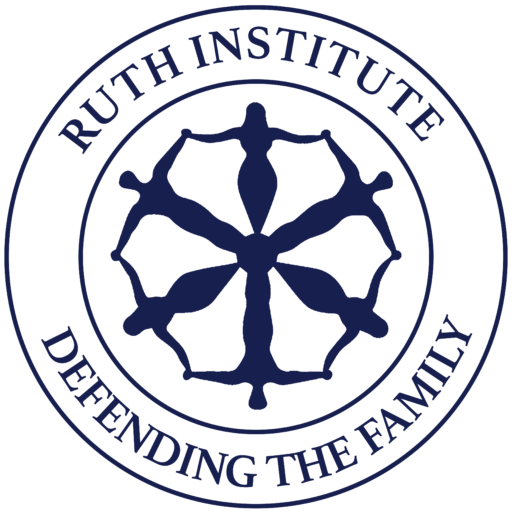
Thanksgiving 2020 commemorates the 400th anniversary of the Pilgrims arriving at Cape Cod and their creation of the Mayflower Compact. Much has been said about the Pilgrims and their journey, from their rejection of communism, to the gratitude they gave God for sparing them from the King, the elements, and unfriendly neighbors. Little, though, has been said about how important the Pilgrim family was.
The first example of how important the Pilgrim family was, was the sacrifice these Separatists made as they traveled from Scrooby, England in 1608-1609, to escape the intolerance of the king, grew to 300 strong in Leiden Holland. Later they sacrificed for their families again, by removing themselves and their children from Holland to protect them from the loose morals of neighbors.

William Bradford, Mayflower passenger and second governor of the colony, said of their departure, “But that which was more lamentable, and of all sorrows most heavy to be borne, was that many of their children, by these occasions and the great licentiousness of youth in that country, and the manifold temptations of the place, were drawn away by evil examples into extravagant and dangerous courses, getting the reins off their necks and departingfrom their parents.” Even in the 17th century, parents were concerned about how their children were being raised and acted to protect them from negative influences.
The small number that boarded the Mayflower in 1620 sacrificed again for the Pilgrim family. The 102 passengers, the “saints” and “strangers”, sailed for 66 days on an old merchant (cargo) ship, eating biscuits in the dark so they wouldn’t see the weevils, made this sacrifice for their families. The group that landed more than 250 miles north of their destination in Virginia and then fell on their knees to thank the Lord for their safe arrival; the 41 men, including 2 indentured servants, who gathered on board the Mayflower in November of 1620 and joined together in agreement to be answerable to God and to their fellow men, to govern themselves by consent in a civil body; did it all for family.
The second example of the pilgrim family coming first, was when they decided to change from their original commune-style living (imposed on them by their sponsoring company). William Bradford, and the rest, soon saw that by sacrificing their families for the company, the colony was failing. In 1623 they changed the arrangement so that every man could have his own plot of land and care for his family first.
Bradford wrote, “At length, after much debate of things, [Governor Carver]…gave way that they should set corn every man for his own particular, and in that regard trust to themselves; in all other things to go in the general way
as before. And so assigned to every family a parcel of land, according to the proportion of their number.”
Tom Bethel of the Hoover Institute wrote about the change, “The colonists immediately became responsible for their own actions (and those of their immediate families), not for the actions of the whole community Knowing that
the fruits of his labor would benefit his own family and dependents, the head of each household was given an incentive to work harder. He could know that his additional efforts would help specific people who depended on him.” The men of the colony saw that their immediate families could benefit, were more motivated and productive after 1623.
Dr. Jennifer Roback Morse has put this familial relationship eloquently in her Thanksgiving message,
“The family is bigger than government. God created the family in the Garden of Eden. He created the first social institution: the Married couple. The family can stand on its own and is a potential threat to any totalitarian plan. Every little household created by a man and a woman can sustain itself, provide for itself and protect itself. Fathers are natural authority figures. Mothers are natural objects of loyalty and affection. Totalitarian governments
hate both mothers and fathers.” The pilgrims at Plimouth needed both their families and the fruit of their labors to survive. The change made in 1623 from collectivized living to private property allowed the structure of the family to survive and flourish.
The pilgrims were also concerned about generations yet unborn and the big picture; pilgrim family future, as it were. They showed their commitment to the future by staying put. When the Mayflower finally departed New England shores on March 21,1621, the captain offered to return the remaining weary and diseased pilgrims. Not a single one left. They stayed planted. They understood that their mission was “to plant the First Colony.”

Their commitment to the future was also shown by how they spoke. They used the words “seed,” “root and
branch,” as well as “planting,” “tree,” “covenant,” “blood,” “lineage” and “nations” when they talked about the future of their families and the colony. They built their settlement to house their posterity permanently.
They looked for a Heavenly city, Bradford explained, and sought that which was promised the “heirs”: a promised land and liberty to worship according to the dictates of conscience. Contrary to popular belief, the Pilgrims didn’t limit freedom of conscience to their own members. By enacting the Mayflower Compact in they produced a civil government which protected both the Pilgrims and the strangers.

The Forefathers Monument memorializes that commitment. It states “Erected by a grateful people in the remembrance of their labors, sacrifices and sufferings for the cause of civil an religious liberty.” This protection even extended beyond protestant faiths. Uniquely for Puritan New England, Governor Bradford, and other members of the colony, received a Canadian Jesuit Priest who made a tour of Massachusetts in 1650. The priest was even given fish on a Friday, in deference to his religion.
They extended that freedom of conscience to their Indian neighbors as well. Richard Pickering, Senior Historian at Plimoth, explained that archaeological evidence shows they interacted almost daily the first year. By treaty, the pilgrims and the Wampoanog tribes under Massasoit kept peace for over 50 years, helping each other against enemies, starvation, and disease. When Massasoit contracted typhus, and was on the verge of death,
Edward Winslow scraped the furry bacteria from the chief’s tongue, fed him soft foods and nursed him back to health. The chief said, “Now I see the English are my friends and love me.”
Pointing to the long-lasting influence of the Pilgrims’ concern with their descendants, Richard Pickering said their ideas were later incorporated into the Declaration of Independence and the Constitution with the stated purpose to “secure the blessings of liberty to ourselves and our posterity.” They were able to instill these virtues because they thought about and acted for their posterity.
This Thanksgiving, let us be grateful for the Pilgrims and their sacrifices. Their focus on family permitted them to survive the first few harsh winters. Their focus on their posterity, blessed not only their neighbors, but also all Americans who enjoy the blessings of liberty. And it all happened because
of family.
– Written by Julie Maddox, friend of the Ruth Institute.
